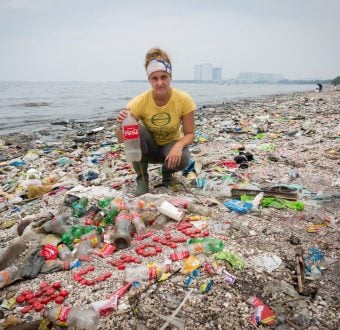On June 11, the Coalition to Prevent Chemical Disasters is holding a tele-briefing on the status of President Obama’s 2013 Executive Order to improve chemical plant security. Discussion topics will include chemical accidents since the West, Texas fertilizer explosion and how they could have been prevented, the inadequacy of voluntary measures, an upcoming EPA webinar to update the public on the Executive Order, and the EPA’s broad authority to prevent chemical disasters under the Clean Air Act (CAA). Representatives from unions, environmental justice groups, public health organizations, and environmental organizations will urge immediate EPA action on this critical issue.
The briefing coincides with the thirteenth anniversary of former EPA administrator Christine Todd Whitman’s proposed rules to increase security at chemical facilities, which were brought to a standstill by the Bush administration in 2002. If they had been enacted, Whitman’s rules would have made millions of Americans safer by requiring chemical facilities to conduct and regularly update vulnerability assessments on potential chemical releases and submit actions plans to address said vulnerabilities. Whitman’s rules also would have required facilities to reduce hazards using inherently safer processes and consult with Local Emergency Planning Committees (LEPCs) and law enforcement about security plans.
But instead of celebrating thirteen years with common sense security measures, over 110 million Americans remain threatened by a potential chemical disaster. There are frequent incidents at chemical facilities that endanger workers and first responders, lead to disruptive and expansive evacuations, and pollute waterways. Despite these inherent hazards, no new rules have been issued to increase security at these facilities, which President Obama described while Senator in 2006 as “stationary weapons of mass destruction.”
After 9/11, Whitman considered using CAA authority to issue rules on chemical security but decided to pursue legislation instead. Since the Bush administration rejected her proposed rules, Whitman has been calling for the EPA to increase security regulations using its CAA authority.
Whitman wrote a letter in April 2012 to then EPA head Lisa Jackson urging her to close chemical security loopholes using the CAA’s general duty clause, section 112(r)(1). Bob Bostock, Whitman’s homeland security advisor, also supports using CAA authority to act and has said, “in the absence of any legislative fix to this problem, we should just go ahead and do it.”
In a 2012 New York Times Op-Ed, Whitman called for new rules that require inherently safer technology (IST), outlined the problematic limitations of current regulations, and described the opportunity to implement strong, exemption-free rules using the CAA. Whitman wrote that “reducing the vulnerability of these facilities to terrorism is not about politics — it’s about public safety.”
In a 2014 USA Today Op-Ed, Whitman reiterated these calls for IST requirements under new rules and stressed Obama and Biden’s longstanding backing of safety standards: “Both President Obama and Vice President Biden supported the use of inherently safer technology during their Senate careers and as candidates for the White House.” Whitman’s repeated appeals for action underscore the urgency of chemical security and the practicality of using CAA authority.
The EPA has pledged to propose rules in September 2015 to comply with the Executive Order issued in the wake of the 2013 West, TX fertilizer plant explosion. Even if the agency does so, it usually takes 12-15 months to finalize new rules. By then, Obama will have left office and a new President or Congress could easily block new rules. The EPA has written rules very quickly in the past. During the Clinton administration, Carol Browner headed the agency and managed to write rules in 10 days when Clinton was forced to sign an emergency spending bill with a last-minute addition that would have killed the EPA’s plans to regulate pollution in waterways.
If the EPA could write rules in 10 days, there is no excuse for the nearly two years we’ve waited since the President’s Executive Order. Whitman’s EPA tried the legislative approach and was blocked. Using CAA authority is the best available option to reduce catastrophic hazards and protect communities. The EPA’s June 8 alert to the chemical industry promoting safer technology and processes underscores the need for regulations that will actually prevent disasters. The alert openly admits that “it cannot and does not impose legally binding requirements on the agencies, states, or the regulated community.”
Take action and tell President Obama to complete the rule-making he promised in his 2008 campaign and not to repeat Bush’s legacy of inaction and obstructionism.



